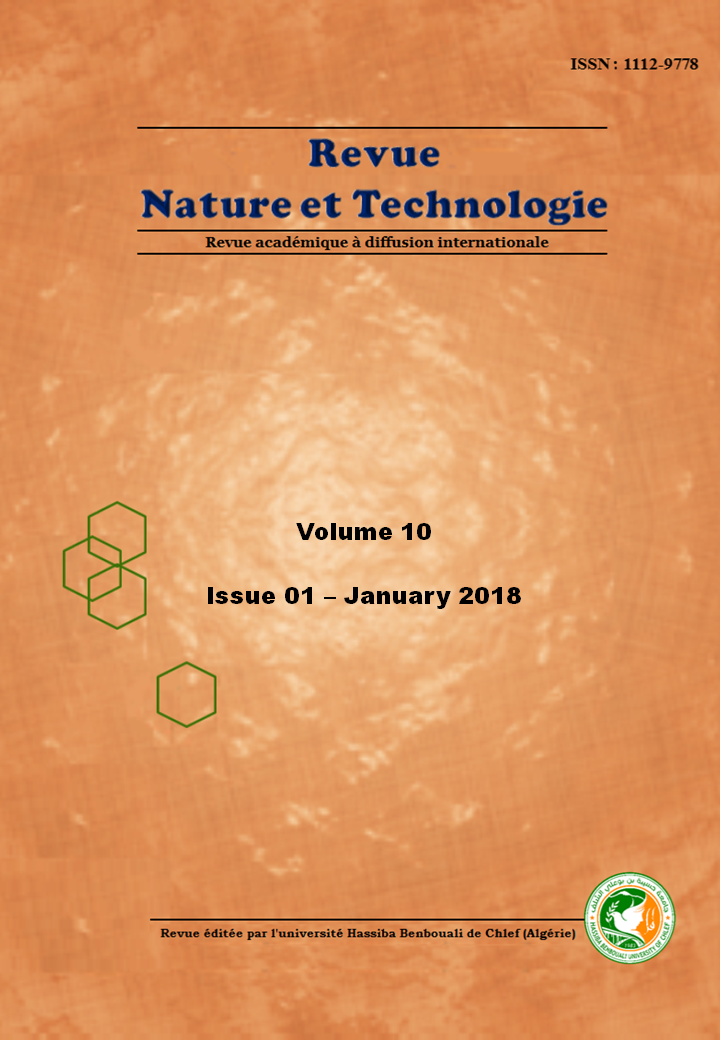Characterization of a weld seam by FSW : Case of polymeric materials
Keywords:
Polymers, Tensile testing, FSW, FEM, Coupling, Process-propertyAbstract
The aim of our experimental work is to propose a tool model that could be used as a predictive tool to obtain a good welding of polymers like HDPE by the FSW technique or a linear welding of thin flat plates. A series of experimental tests concerning this type of welding (FSW) have been carried out with different types of tools depending on the optimal welding parameters such as feed speed, rotation speed, geometric shape of the tool, ... etc. Satisfactory results were obtained showing the influence of these parameters on the joint quality.
References
Bulletin technique N°8 de l’ Institue Maupertuis (Institut de recherche appliquée en productique), Le soudage Friction Stir Welding : FSW, Bulletin technique N°8 du Octobre 2007, Contour Antoine de St Exupery, Campus de Ker Lann 35170 Bruz
Jemal N., Masse J-M., Langlois L., Tcherniaeff S., Girot F., Caracterisation d’un alliage 2024-t3 assemblé par frictionmalaxage, Conférence internationale sur le soudage, le CND et l’Industrie des Métaux, IC-WNDT-MI’10 , Oran, 27-28 novembre 2010.
Jemal N., "Qualification du domaine de soudabilité en soudage par friction malaxage", Thèse de doctorat délivré par l’École Nationale
Supérieure d'Arts et Métiers,13 décembre 2011, 51 pp
Lorrain O., "Analyses expérimentale et numériquedu procédé de soudage par friction malaxage FSW ", Thèse de Doctorat, 11 juin 2010; École Nationale Supérieure d'Arts et Métiers, Paris, 120 pp. https://tel.archives-ouvertes.fr/file/index/docid/.../TheseLorrain.pdf
Haudin J-M., Elaboration des polymeres, Chapitre IV, Matériaux pour l'ingénieur : Groupe Français d'Etudes et d'Applications des Polymères, Strasbourg (1996), 42-49 : mms2.ensmp.fr/mat_paris/elaboration/.../Ch_4_Elab_Polymeres.pdf
Catalogue technique pour tubes en polyéthylène PE: Filiale du Groupe CHIALI de Sidi Bel-Abbes (Algérie); site : www.groupechiali.com.
ASTM Méthode d'essai standard pour les propriétés de traction des plastiques, 2017 (Norme ISO 3167) : www.atomer.fr/1/1_dimensions-eprouvettes-essais-de-traction.html

Downloads
Published
How to Cite
Issue
Section
License
Copyright (c) 2018 Nature & Technology Journal

This work is licensed under a Creative Commons Attribution 4.0 International License.
- All publications of "Nature & Technology Journal" are available under CC-BY Creative Commons Attribution 4.0 International which allows sharing, copying, reproduction, distribution, communication, reuse, adaptation by all means, in all formats and under all licenses.
- Any exploitation of the work or derivative works, including for commercial purposes, is possible. The only obligation is to credit the creators of the authorship of the original works, to indicate the sources and to indicate if modifications were made to the works (obligation of attribution).
This License gives:
- Nature & Technology Journal the right to develop, promote, distribute and archive the article set cited above (including, without limitation, the right to publish the work in whole or in part in any form whatsoever) and ensure the widest dissemination.
- The author (s) reserves the right to use all or part of this article, including tables and figures of his own works, providing that the appropriate recognition is given to the publisher as the holder of the copyrights, and the right to make copies of this article for its own use, but not for sale.




